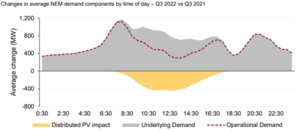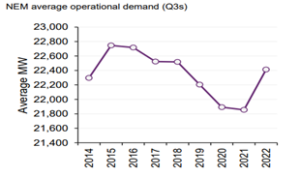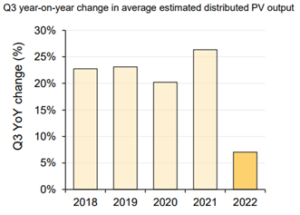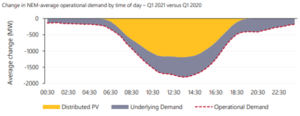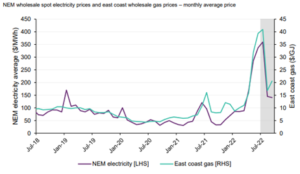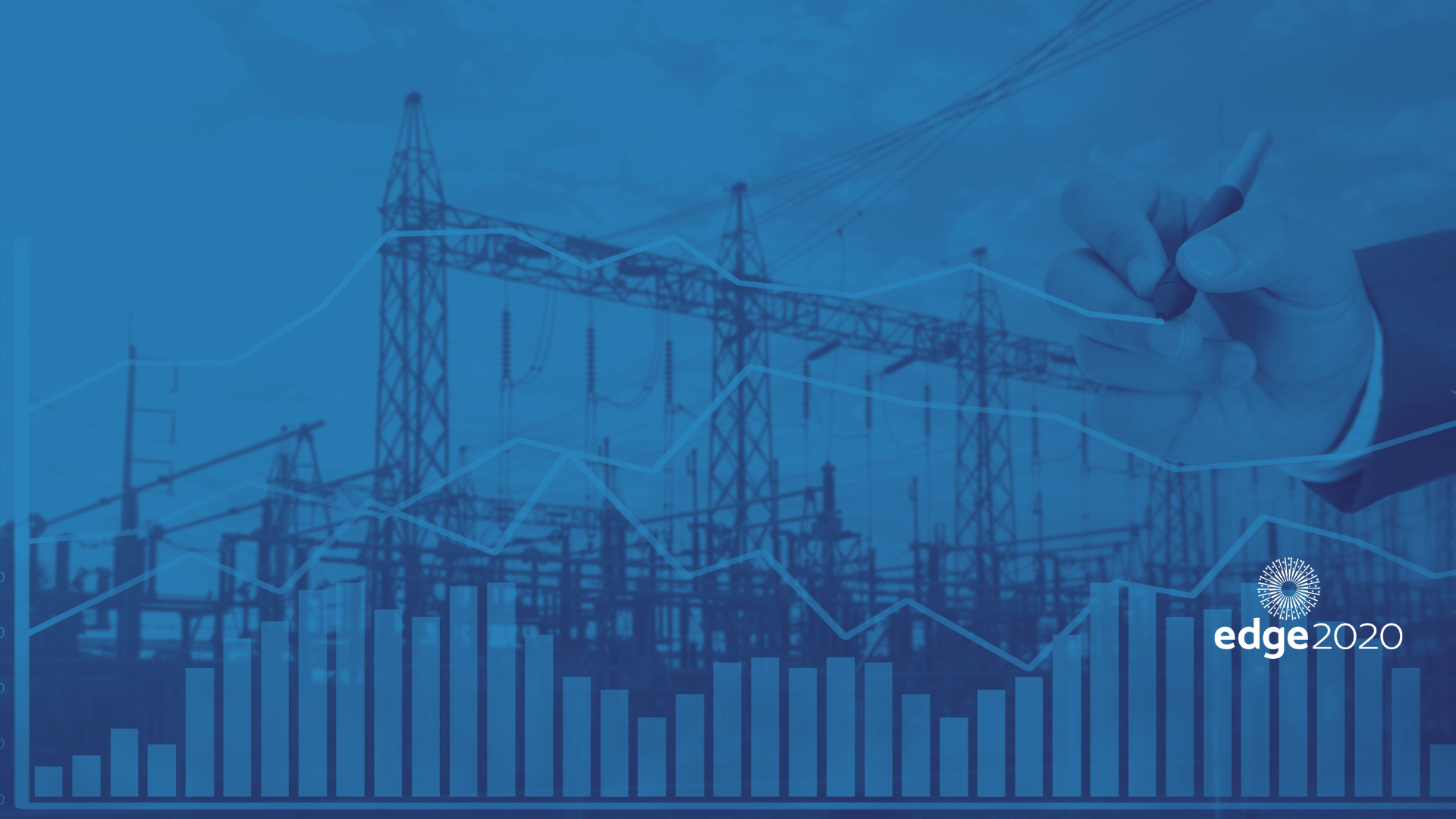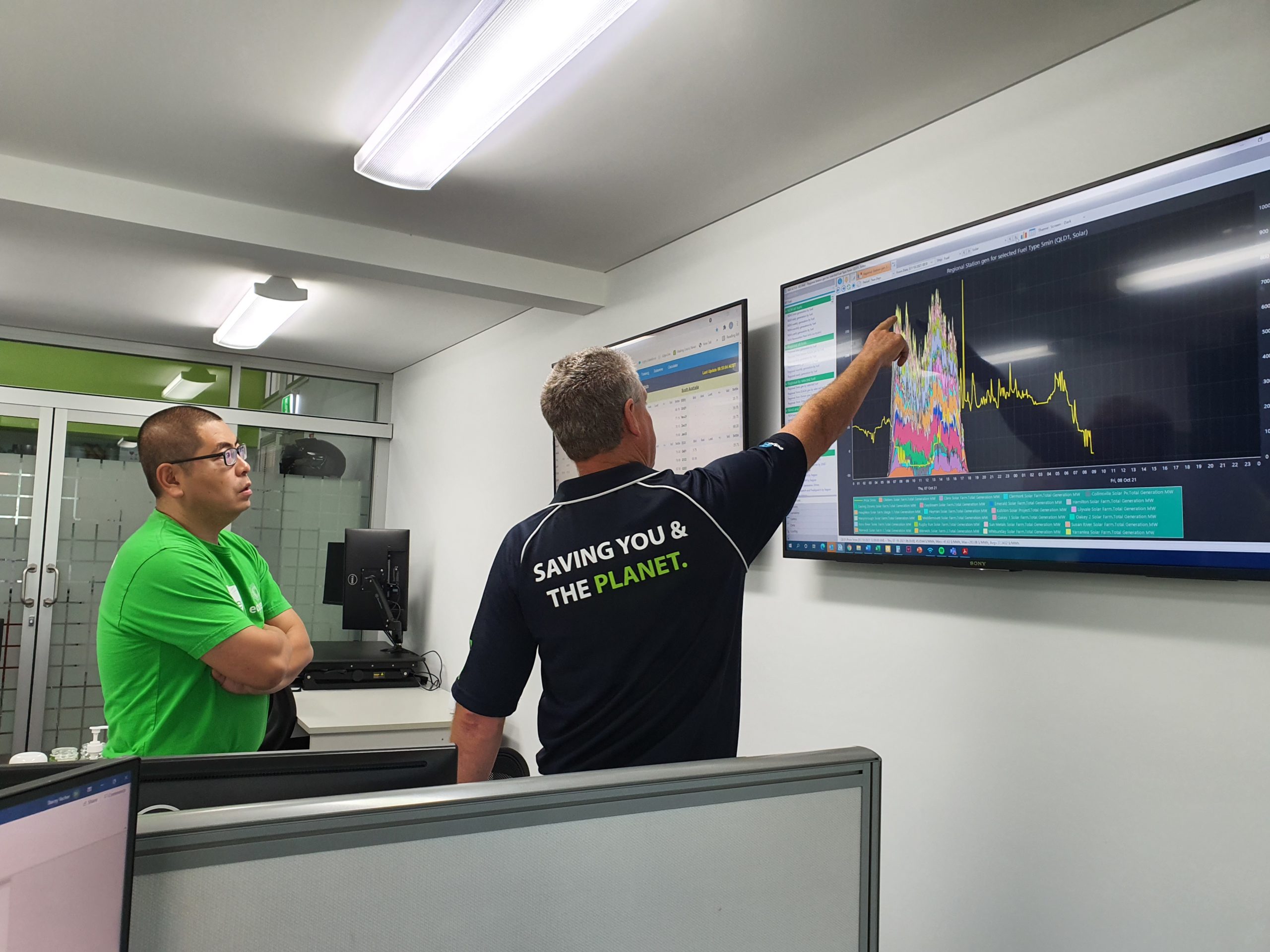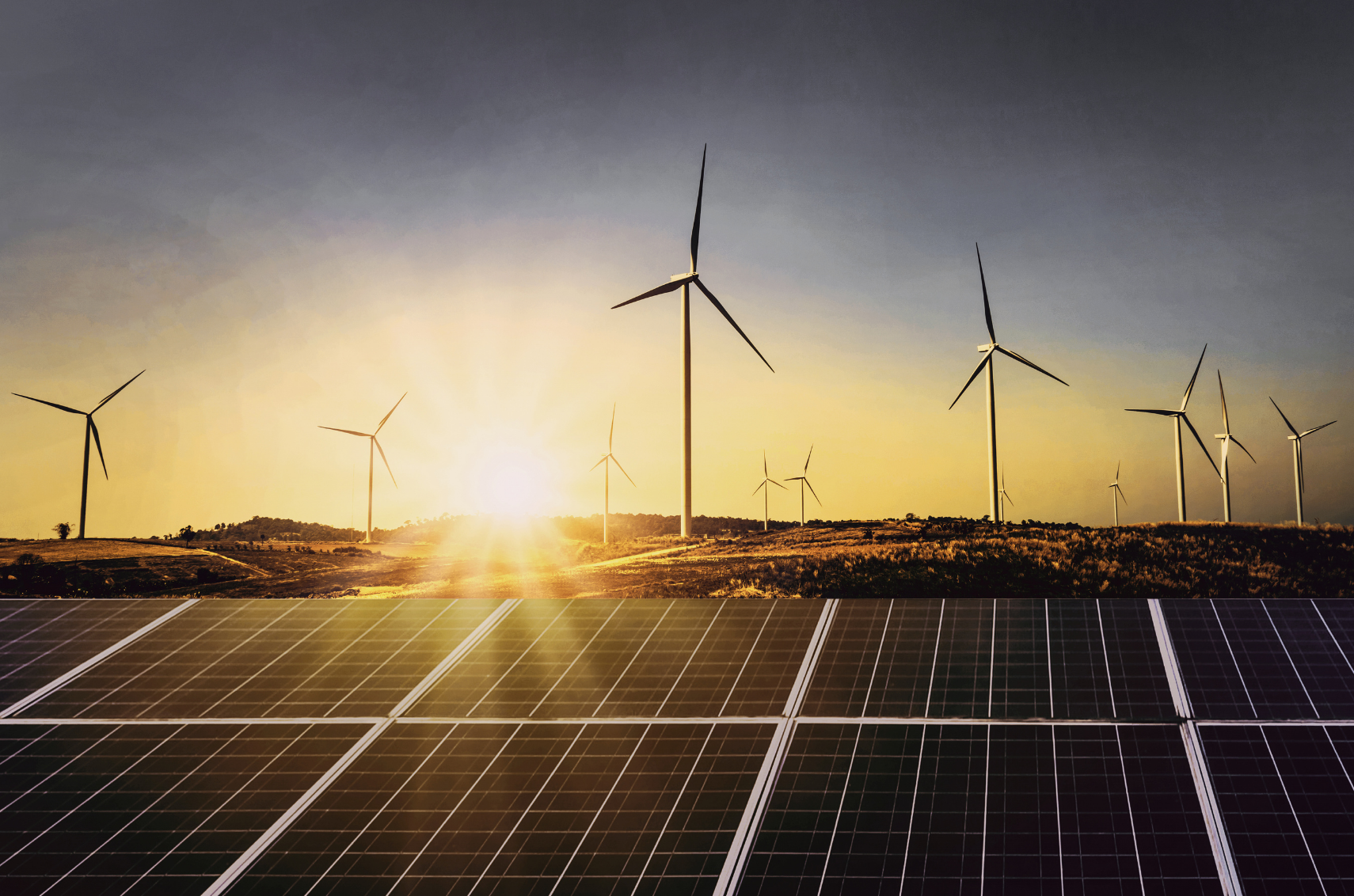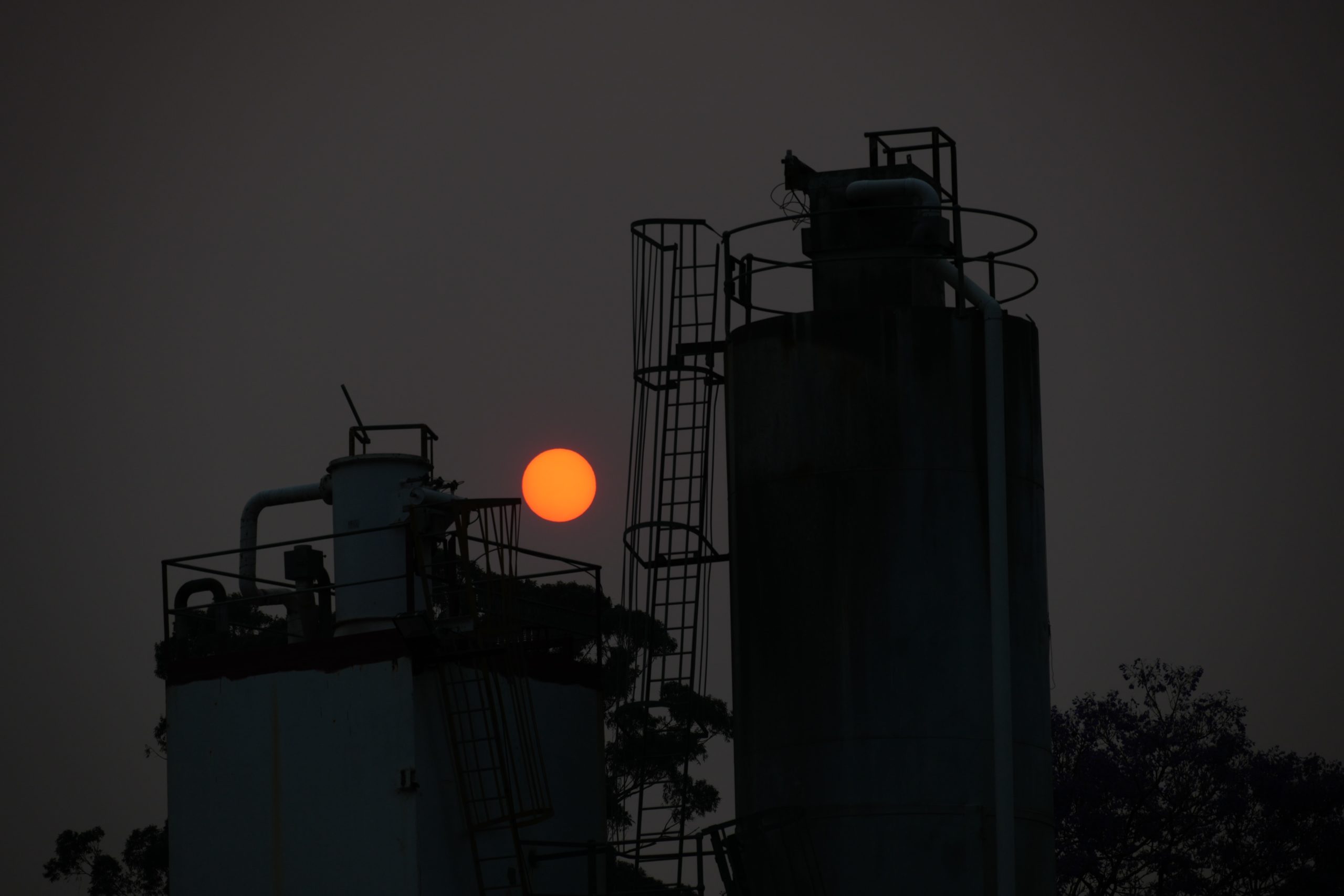Wholesale electricity prices have reduced in recent months however many end users are not seeing the benefits. It is expected the reduction in wholesale electricity prices will not flow onto household and businesses bills until 2024.
Federal treasury has analysed the wholesale electricity market in November 2022 and compared it with the prices we saw in December. Analysis showed wholesale prices dropped but Edge has previously shown renewable energy has not significantly increased, gas supply has not changed, thermal generation has remained unchanged so why the drop in the cost of electricity?
In late December the Federal government stepped into the energy market and intervened, essentially disconnecting the domestic energy market from the international energy market. This intervention put caps on the domestic price of wholesale gas and the price of coal.
Following these caps being put in place the domestic electricity market corrected, and both spot and futures contracts dropped to match an underlying cost of production for electricity based on these new capped fuel prices.
While the wholesale market dropped almost overnight it will take time for the lower costs to flow through to end users unless their load is spot exposed in Q123. Retailers had already locked in the majority of pricing for end users prior to the market dropping due to the intervention, so most end user electricity bills will reflect the historic high wholesale prices.
The federal analysis claims the price caps on coal and gas have dropped prices in QLD by 44% and 38% in NSW. Does this mean electricity bills are going to drop a similar amount? Well, the bad news is no. Retail bills are normally locked in well in advance so many large users have locked in pricing for 2023. The underlying energy costs are only part of the retail bill as other costs include transmission, distribution and AEMO charges which unfortunately have not decreased and have the potential to increase as the market evolves.
While the market intervention was a necessary step to insulate end users from the escalating international energy prices due to the war in Ukraine, the next step is to continue to drive down prices as the country transitions to renewables. We must keep in mind the transition to renewables will come at a cost. Renewable energy requires more transmission lines to connect the generators to the grid, they require specialised services to maintain the security of the grid and will also require a higher cost generation or storage to provide firming for around the clock supply.
While the underlying cost of electricity will drop with more renewable energy entering the market, the other costs on the electricity bill will now represent a higher proportion and are likely to increase.
Edge2020 have an eye on the energy market, enabling us to support price benefits as well as customer supply and demand agreements. Our clients rely on our experts to ensure they are informed, equipped, and ideally positioned to make the right decisions at the right time. If you could benefit from an expert eye on your energy portfolio, we’d love to meet you. Contact us on: 1800 334 336 or email: info@edge2020.com.au


